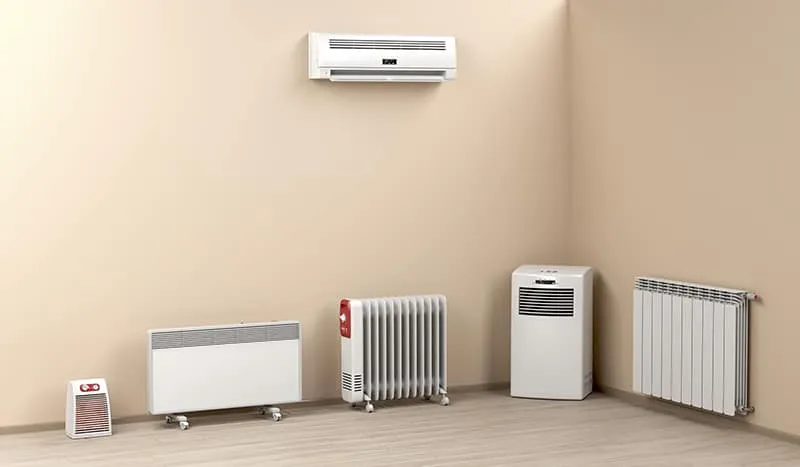India is a tropical country, that experiences climatic change every other month. Unbearable summers of May and then humid monsoon followed by teeth rattling winters. The changing seasons make an efficient HVAC system in Indian homes and offices a must. Among all the HVAC products, one that is most common is the Air conditioner. The Air conditioning system is used to cool our space and get rid of the heat. The variety in air conditioner type is immense, ranging from compact ductless split AC or window AC to full-fledged central air conditioning systems.
The first modern air conditioner was invented by William Carrier in 1902. Back then, it was used to get rid of the humidity. Though the job has changed the technicalities of it remains more or less the same. Today Air conditioning is used for cooling, removing heat through ventilation. A perfect air conditioning system can make life so much better and more comfortable. Thus, the purchase of an air conditioner, whichever type – centralised or individual units, must be on the promise of quality, functionality and durability. To find the perfect air conditioning system for our space, we need to educate ourselves about the fundamentals of air conditioning. So, to save you the hassle, we have compiled basics about air conditioners that will help you purchase the best AC for your space.
Contents
How does the air conditioning system work?
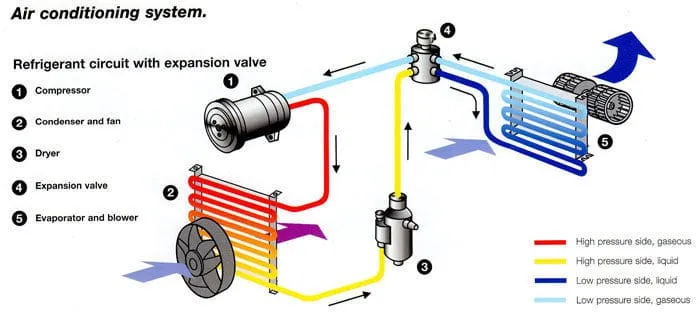
Image Source: Mechanical Booster
An air conditioning system is an apparatus that removes the warm air outside and brings in cool air inside through vapourisation. The principle of cooling in an air conditioner and refrigerator are very similar. Firstly, the system captures the warm air, the cold evaporator pipes cool it down and remove excess moisture from the air. The heat absorbed by the cooler pipe is turned into warm gas and dispersed out. Meanwhile, the coolant channels through the compressor and then the condenser to turn into a cool liquid. Thereafter, cool air is re-circulated in the room mixing with the room air and cooling the temperature of the enclosed space.
Interestingly, an air conditioning system does more than just cooling. Modern air conditioners are often fitted with advanced filters that capture pollen, allergens and dust; thus, providing us clean air to breathe. The conditioner in AC draws the excess moisture and also works as a dehumidifier. These advantages of air conditioning make it a popular choice of cooling system for both domestic and commercial use.
| Also see: Air coolers: 7 things we bet you didn’t know (+buying options) |
Components of the air conditioning system
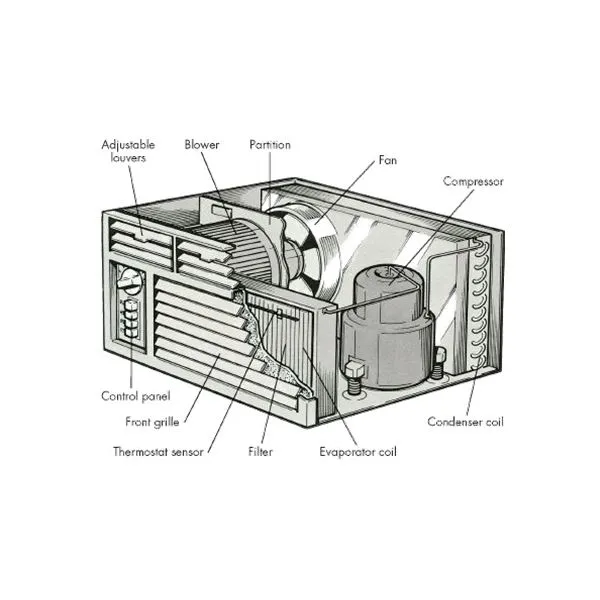
Image Source: Bright Height Engineering
Expansion valve
Expansion valves help in regulating the flow of refrigerants. They also help in changing the pressure level of high-pressure refrigerant liquid to low-pressure refrigerant gas. The expansion valve makes the liquid ready for evaporation.
| Also see: Best AC (air conditioner) in India | Best AC brands in India (Prices incl.) |
Evaporator coil
An evaporator coil is a device that captures the heat from the room and collects it for the air condition system. It is located near the furnace, attached to the condenser with a thin pipe. It works with the condenser cyclically to produce cool air.
Refrigerant
The evaporator coils consist of several tubes containing the refrigerant. It is a fluid that soaks the heat from the air. A refrigerant works both inside and outside the air conditioner unit. The refrigerant is evaporated by the coil and then again liquidify. This repeated process helps in the cooling of air.
Compressor
A compressor is the engine of an air conditioner. Compressor with the help of working fluid vaporizes the liquids. The main task of a compressor is to turn low-pressure gas into high-pressure gas at high temperatures. In an air conditioning system, a compressor acts as a pump and prepares the gas for condensing process.
Condenser coil
The fan fitted in the condenser coil, cools down the high pressure, high-temperature gas and converts it back to liquid. The condenser coil is made up of different tubes that are filled with refrigerants.
| Also see: Best ceiling fans in India (brand & price review) – shop online |
Thermostat
A thermostat in an air conditioning system is used to regulate the heat flow. It is located right behind the control panel of your AC. The thermostat can be a simple manual setting or with a more advanced timer and automatic settings.
Air conditioner types
Central air conditioning
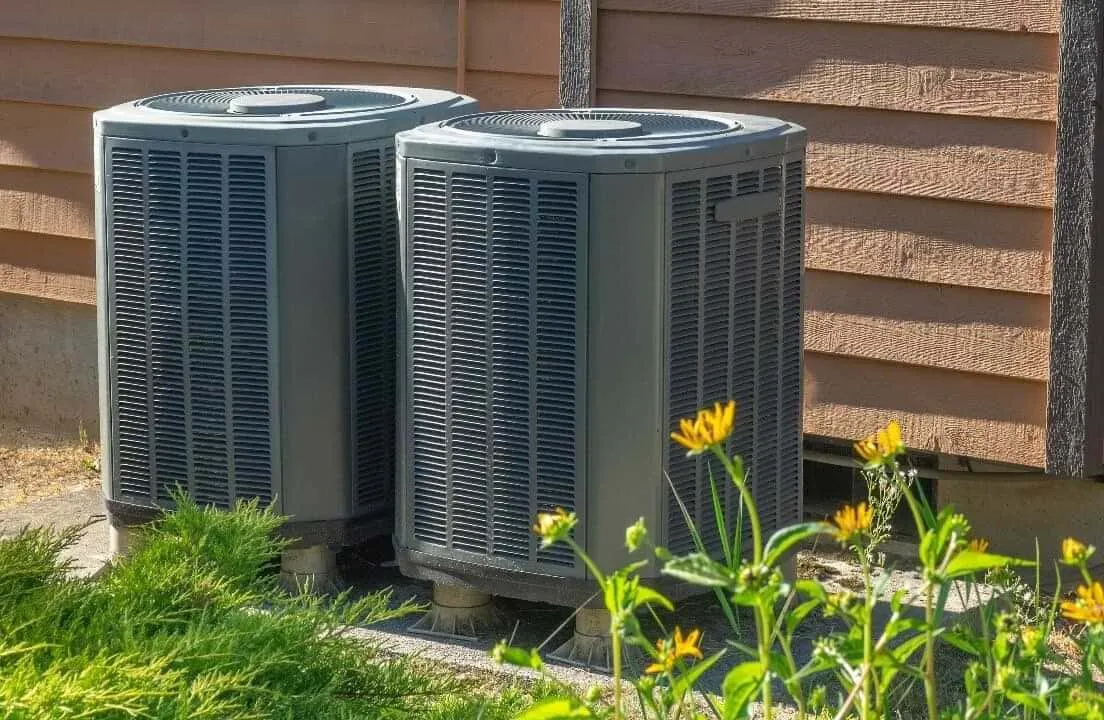
Image Source: Maudib/Getty Images
A central AC is the most elaborate form of air conditioning system. The central air conditioner consists of two units- condensing and evaporating unit attached with a thin refrigerating tube. The central air conditioner is claimed to be the most effective and solid cooling system. Unlike ductless units, the central AC can cool the whole house without separate installations. This form of air conditioning is fixed, and thus the installation is more expensive than other ACs. However, with proper maintenance, it can be more energy-efficient than ductless systems.
Window AC
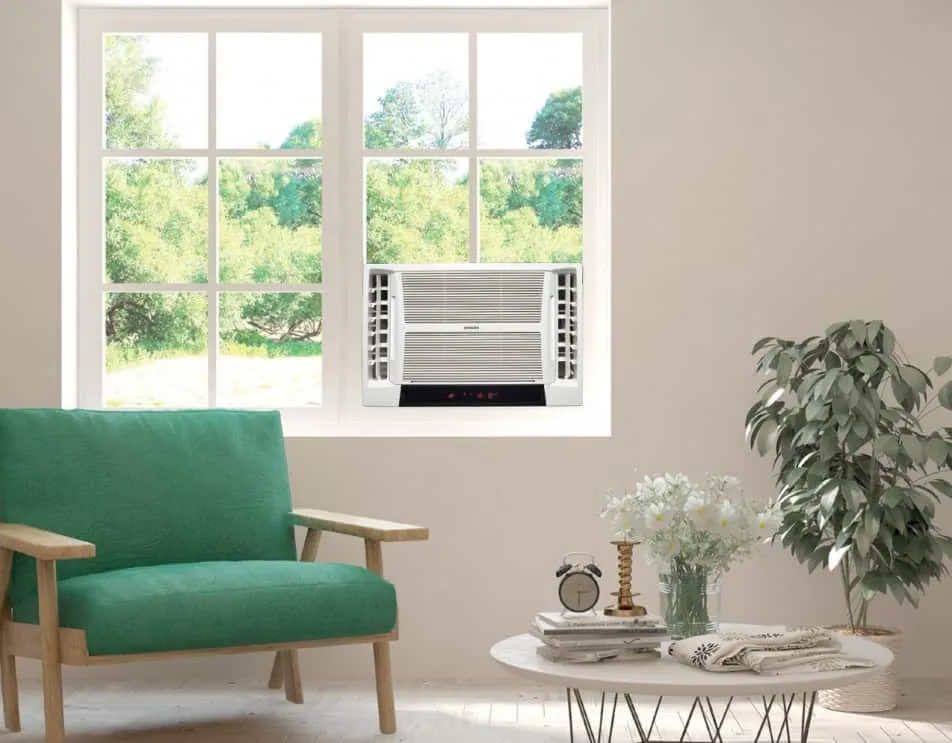
Image Source: Hitachi India
As the name suggests, window air conditioners are unitary cooling units fixed in the windows or rectangular cutouts in the wall. Moreover, a window AC contains all the necessary parts in a compact box. The front of the air conditioner faces inside the room and the back ejects heat through the condenser coils outside. The window air conditioner is one of the most desired type in India, due to its easy installation and inexpensive price range.
Ductless mini-split AC
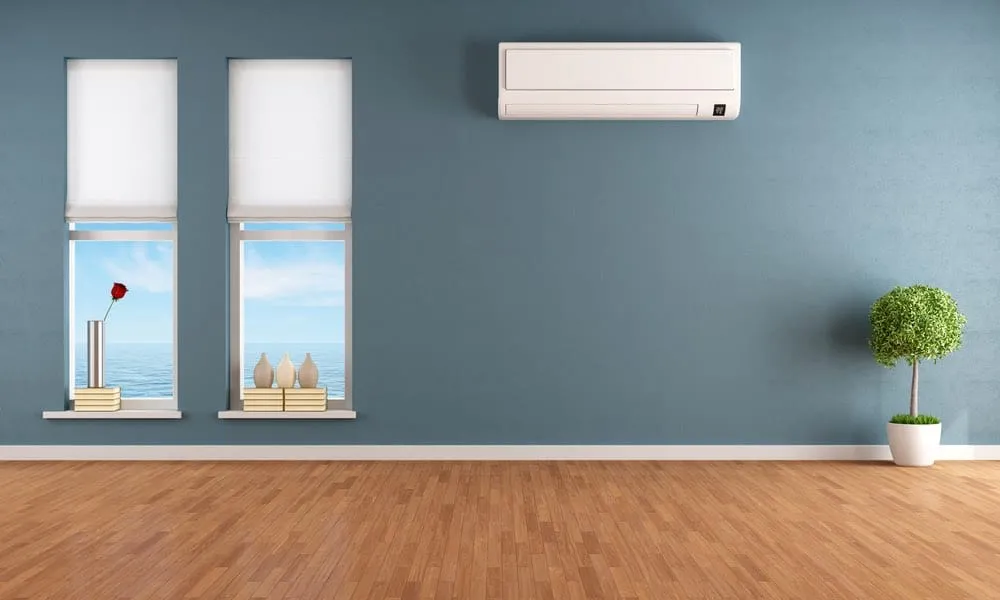
Image Source: Emcron.com
Ductless mini-split AC also commonly known as split AC is the popular choice for residential spaces. Like central air conditioning, split AC too has two different units – the evaporative unit, placed inside the room while the condensing unit sits in the exterior. Split AC comes with two types of installation, floor mount or wall-mounted. Floor mounted split air conditioner looks discreet but wall mounted AC distributes the cool air more uniformly around the room. Apart from cooling, most split type air conditioners can also provide heating functions in winters.
Dual fuel AC

Image Source: Henderson heating and cooling
Dual fuel air conditioning systems are devices that can perform both heating and cooling functions. The apparatus of dual fuel AC is different from that of normal air conditioners. Heat pump and furnace make up the structure of dual fuel AC. The heat pump can create cool air in summer and hot air in winters, according to your requirements. It is a great HVAC solution for a country like India, which experiences both hot and cold climates. The market for these is rapidly growing as more and more people are opting for permanent and central HVAC solutions for their homes.
Portable AC

Image Source: Black+Decker
Portable air conditioners are mobile individual units that can be moved around. It is a unitary system that is placed on room floors and a hose vent that releases hot air outside. Also, the system of a portable type air conditioner is very similar to the window AC. However, the cooling capacity of these air conditioners is limited. Portable AC is great for small rooms or for temporary residence accommodations. These are very easy to install and also a budget option, however, these do get heated up during the process of cooling.
Conclusion
The Air conditioning system is a vital component for all residential and commercial setups. The cooling technology of air conditioners relieves us not only from climatic heating but also it keeps heavy industrial heating in factories at bay. Since there are so many different types of air conditioners available in the market; the purchase should be made keeping in mind your requirement, budget and building specifications. Central and dual fuel ACs is a great option for permanent residences, homeowners and the hospitality sector. Meanwhile, a ductless system like split, window and portable AC is price-effective cooling solutions. Another important aspect of the purchase of an air conditioning system is the brand. So, experts advise you to always opt for brands that offer reliable after-sale service for easy maintenance of your air conditioning system.
The featured image is taken from Leanmetrics.com

